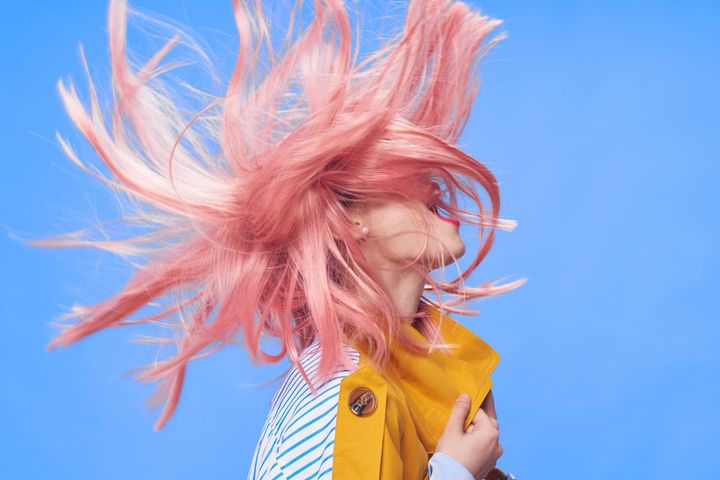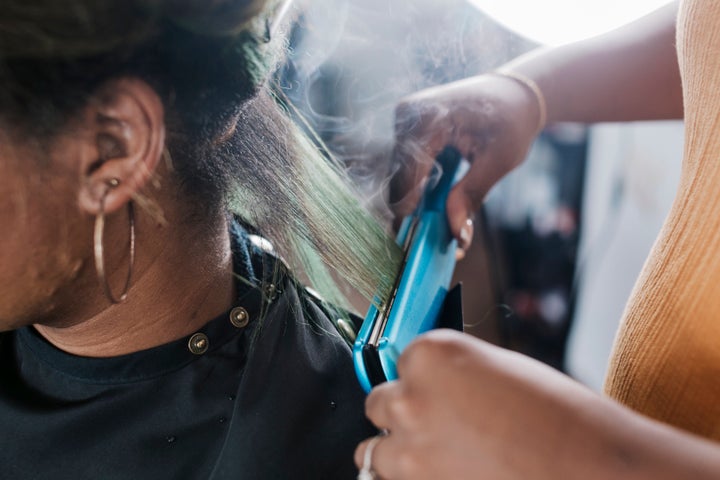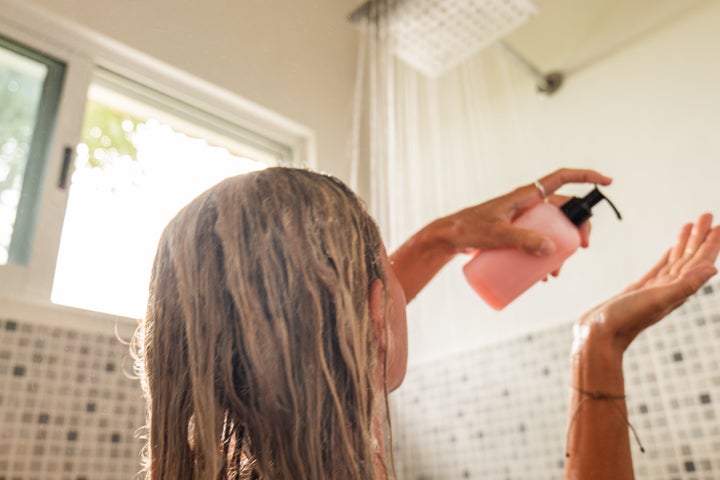
Between bobs, pixie cuts, balayage, bangs, cornrows and extensions, there are many hairstyles that come and go throughout your lifetime. But while these hairstyles may change every few months or years, your hair health is something that’s important to upkeep throughout your life.
You probably know the basics of hair health, but hairstylists say there are many rules they never break when it comes to their or their clients’ hair ― and you may be breaking some of them every day.
Below, hairstylists share what they won’t do to their hair. Here are the top mistakes.
Applying Conditioner At The Roots
Who knew that your conditioner application should actually start at your ends, not at your roots? We’ve all been conditioning our hair incorrectly, according to Tatum Neill, the creative director for Aveda Arts & Sciences Institutes and Elevate Hair.
“Ideally, it’s almost like shampoo and conditioner should be applied in opposite,” Neill said. “Typically when we have dirt and oil in the hair, it’s at the scalp level. And typically when we have dryness and damage on the hair, it’s on the end.”
“Most people put shampoo on the top of the head, and they put conditioner on top of the head, right?”
Well, you don’t need conditioner at your roots, he explained. “You have natural sebum that’s coming out every day — the top of your head, the roots, should have plenty of oil.”
Applying shampoo and conditioner at the roots is habitual, but conditioner really matters most at your ends, Neill added.
Or Skipping Conditioner, For That Matter
“I never shampoo or detox hair without adding moisture back in,” said Ash Therese, the salon director and head stylist at The Bird House Salon in New York. “I know that finer hair types, a lot of people feel like conditioner [or] leave-in conditioners can weigh their hair down. In my opinion, there is a product for everyone.”
It’s an important step — just like you apply moisturiser to your skin, you should apply moisture to your hair. For colour-treated hair, this is even more important, she noted.
“Always adding moisture back in, whether it be a leave-in conditioner — I know a lot of people are doing K18 right now, which I think is a wonderful product — or just conditioning in the shower,” Therese said. And that should be a good-quality conditioner, she said.
“The two-in-one shampoo conditioner things, I would never use on my client’s hair or my own,” she added.
Only Using Sulfate-Free Shampoo
“I wouldn’t use a sulfate-free shampoo exclusively to wash my hair,” said Titi Bello, a hair coach and founder of Ori Lifestyle, a natural hair care brand and education company.
While sulfate-free shampoos do not strip the hair as much as shampoos with sulfates, Bello said there is a place for both kinds of shampoo in a healthy hair regimen.
Sulfates are helpful in achieving a deep clean, which can help with both scalp and hair health, she said.
“I’ve had too many clients that suffer from dry scalp or flaky scalp, just low-key scalp conditions ... and often when I ask them to introduce a shampoo with sulfates and when they do so, within a month they find that the scalp issue has cleared,” Bello said.
Sulfate-free shampoos gained popularity when sulfates were wrongly linked to cancer, Bello said. Since then, studies have found that sulfates are not carcinogenic.
For some people, sulfates can cause irritation (as can any product), Bello said. If that’s you, don’t use a shampoo with sulfates. But for those who don’t have this problem, Bello said it’s a good idea to use each type of shampoo regularly.

Skipping Heat Protectant
“Something I stress, like the number one thing in my chair, is heat protection,” said Shantel Keeley, the co-owner of Platinum Salon in Connecticut. “I never style my hair or any of my client’s hair without using some kind of heat protection product.”
“Heat damage is irreversible. I’ve seen pretty extreme damage come from hot tools,” she added.
With hot tools being so accessible and touted as a way to save time and money, it’s easy to fall into frequent heat styling — but it’s important to make sure you protect your hair before applying high heat to it.
When it comes to what product to use, Keely said she often uses Magic Myst, which is a heat protectant and leave-in conditioner.
It’s important that you don’t let a heat protectant sit around in your cabinet for too long.
“You should always be checking the expiration date on the back of your products because they do lose their effectiveness,” Keely said.
She added that most beauty products have a number on the back (that looks like this) that tells you how many months the opened product is good for, whether that’s 12, 18, 24 months and so on.
Not Drying Roots First When Using A Blow Dryer
“If you are blow drying your hair, it’s important that you think about drying it from your roots to ends,” Neill said.
If you dry the ends first, any moisture from the roots is going to go down to the end of your hair and get the ends wet again. This will not only ruin your hairstyle but require you to go through it again with a hot blow dryer, which can result in damage.
“A lot of times people don’t focus enough ... at the root level to accomplish their style,” Neill said.
Skimping On Product Quality
While you can, of course, find affordable, well-made hair tools, Therese said price can sometimes reflect the quality of an item (like with anything).
“I’ve seen many clients come in who have bought the, you know, $15, $20 blow dry brush and the plates get so hot and the air is coming through the plate [and] it’s causing significant breakage,” Therese said.
“I just always suggest doing your research, especially when it comes to hot tools because ... things are priced a lot of times, not always, with their quality in mind,” she added.
In other words, if you find a blow-dry brush or curling iron for $15 and the original is $150, there is usually a reason and sometimes it is quality control, Therese said.

Turning The Temperature Of A Curling Iron Or Straightener All The Way Up
It should go without saying that frying your hair is not a good thing, but that’s exactly what you’re doing when you put your hot tools on their highest setting.
While your curling iron may go up to 450 degrees, you don’t want to do your hair at the high setting. “I always tell people to keep it at 350 or lower,” Keely said. Super-high heat can actually toast your hair, she noted.
“The best thing you can do is to try to prevent any damage before it happens, Keely said.
Relying On Heavy Tension Styles
“I really try to stay away from heavy tension styling that really puts a lot of stress on the hair shaft or hair follicles that can over time cause hair loss,” said Nikka Whisenhunt, a natural hair stylist and trichology specialist at Aesthetics Salon in Virginia.
This includes braids and also weaves when the braids are too tight.
She stays away from these kinds of styles for both herself and her clients for longevity’s sake. Over time, these styles can cause trauma to the scalp and result in thinning hair or bald patches.
Bello agreed with this and said while she used to wear braids often when she was younger, she now only wears them once a year. Why? Just like our muscles, our hair ages, too, Bello said.
“Hair ages — it’s not as strong as it once was it’s not as dense as it once was,” Bello said. “As we age, I am a firm believer in tailoring our hair practices to our hair needs.”
And in this case, that means taking the pressure off her scalp by wearing braids less frequently.
Ignoring Maintenance
Whisenhunt said she always makes sure her clients stay up-to-date on their hair cuts and trims along with their deep-conditioning treatments and scalp health.
This helps keep the hair healthy all year, whether you have untouched hair (meaning no chemical treatments) or are someone who likes to get highlights or other chemical treatments.